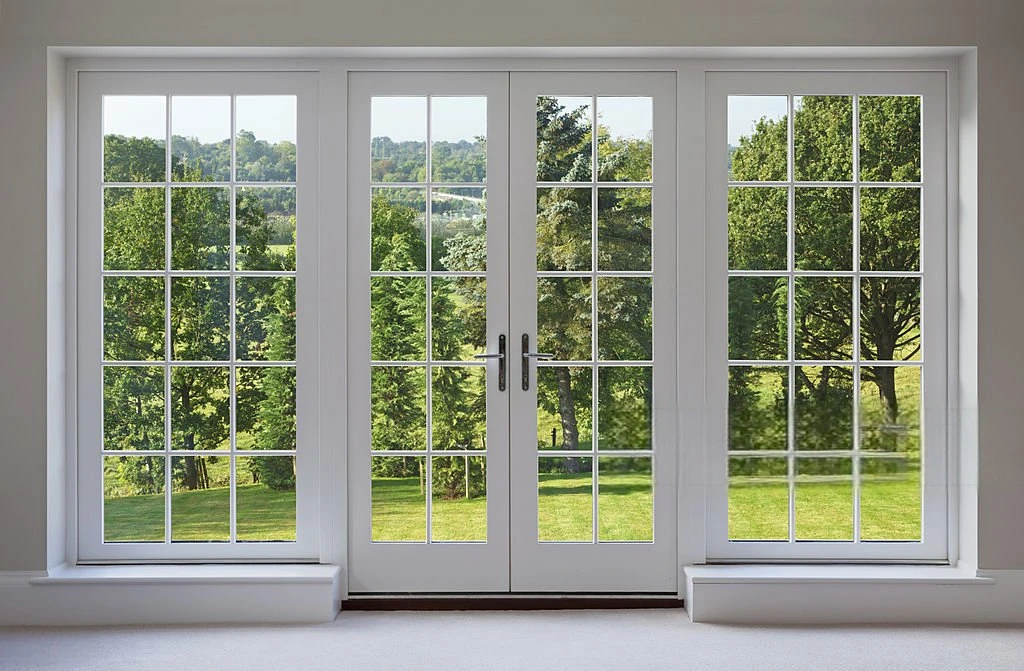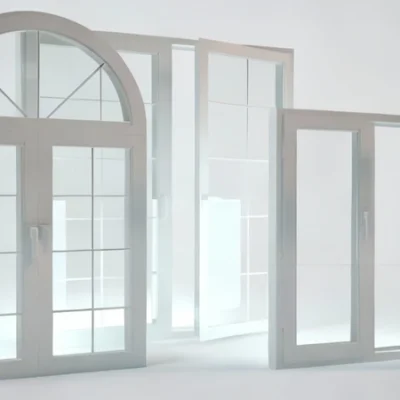Gain a thorough understanding of aluminum French doors.

When architects and importers evaluate hinged patio doors for modern projects, aluminum French doors often rise to the top: slim sightlines, strong frames, durable finishes, and flexible hardware. This guide explains how they’re built, what performance numbers to check, and how to specify them for B2B procurement—so you can quote fast and install with confidence.
What exactly is an aluminum French door?
Traditionally, a “French door” is a pair of hinged glass doors that meet in the middle and swing in or out. Many manufacturers also call them hinged patio doors—functionally the same category. The format delivers abundant daylight, a wide passthrough, and a classic grid or contemporary no-mullion look.

Why aluminum for French doors?
- Strength with narrow profiles. Aluminum’s strength-to-weight ratio enables slimmer frames and larger glass areas than many materials.
Low maintenance + long life. Properly finished frames resist warping and corrosion.
Finish flexibility. Powder-coated systems are the norm; for commercial or coastal jobs, specify coatings that comply with AAMA 2604/2605 for better color/gloss retention and corrosion resistance.
Pro tip: If your project is in a harsh UV/coastal zone, ask for a 2605-grade finish option and document the pretreatment steps in the submittals.

The big performance differentiator: thermal break
Bare aluminum conducts heat. Modern systems solve this with a thermal break—typically a polyamide (PA66) insulating bar that separates the interior and exterior aluminum halves. This “breaks” the heat bridge, cuts heat transfer, raises interior surface temperatures, and helps limit condensation.
Pair the thermal break with Low-E double or triple glazing to improve energy efficiency and comfort. In practice, thermally broken aluminum doors are competitive with other materials while maintaining slim sightlines.

How to read energy labels (what buyers actually check)
In North America, look for NFRC ratings. The key metric on doors is U-factor (lower is better)—it indicates heat transfer through the assembly. Add SHGC and VT as needed for façade balance. Always verify whether ratings are whole-door values.
Security, hardware, and everyday usability
A solid multi-point locking system, robust hinges (often adjustable), and quality gaskets are essential. Many aluminum French door systems ship with 3-point or 5-point locks, Low-E tempered/laminated options, and adjustable hinges to keep the leaf true after installation.
Common configuration choices:
- Inswing vs outswing (outswing can save interior space and improve weather performance in some climates).
Sidelites / transom for more daylight.
Low/flush threshold options for accessibility transitions.
Grid (muntin) pattern or minimal, clear-view design.
Some markets also ask for PAS 24 (UK) or similar security standards on hardware/glazing.
Structural & weather performance
For commercial/mid-rise work, review Design Pressure (DP) / Performance Class documentation. DP ties to structural/water/air performance under specified loads—make sure the tested configuration (size, glazing, hardware) matches your intended door.

The extrusion alloy you’ll see in quotes
Most architectural door profiles are extruded from 6063 aluminum, often in T5 or T6 temper. This alloy is popular for window/door frames thanks to its extrudability, surface finish quality, and corrosion resistance—ideal for anodizing or high-grade powder coat.
Finish options that matter
- Powder coat (architectural). Specify AAMA grade (2603/2604/2605) and gloss level; confirm pretreatment and cure documentation in the submittals.
Anodized. Durable metallic look with excellent UV stability; verify color tolerance across batches.
For seaside projects, consider AAMA 2605 systems and discuss primer options for added corrosion resistance.

Where aluminum French doors excel (use cases)
- Hospitality & retail: durable doors with slim sightlines to showcase interiors.
Multi-family & build-to-rent: repeatable specs, strong hardware, serviceable over life cycle.
Single-family upgrades: classic double-door look with modern thermal performance.
Rutao: B2B manufacturing support for your door program
Rutao supplies custom aluminum French doors and matching window/curtain wall systems for export projects. For trade buyers and OEM/private-label programs, we offer:
- Thermally broken 6063-T5/T6 profiles with Low-E IGU options (tempered, laminated; argon-filled on request).
Finish choices: powder coating to AAMA 2604/2605 equivalents upon request, or anodized finishes.
Hardware suites: multi-point locks, adjustable hinges, and threshold solutions for inswing/outswing.
Engineering support: shop drawings, test data, palletization plans, and post-shipment service.
Send your RFQ with drawings/specs to our team and we’ll turn around compliant quotes for your market.
Quick buyer’s checklist (paste into your RFQ)
Size & swing: pair width × height; inswing/outswing; active leaf.
- Frame system: thermal break (yes/no); profile sightline target (mm).
- Glazing: double or triple; Low-E type; tempered/laminated; gas fill;
- spacer.Performance targets: U-factor, SHGC, VT (NFRC/CE where relevant); DP / water / air class. NFRC CommunityFGIA
- Finish: powder coat (AAMA 2604/2605) or anodized; color code & gloss.
- Hardware: multi-point lock; handle/escutcheon style; hinge type; cylinder region spec.
- Threshold & accessories: standard/low threshold; sill pans; drip caps; screens.
- Documentation: test reports; warranties; installation + maintenance manuals.

FAQs
Many major brands use the terms interchangeably; both describe a hinged, usually double-leaf glazed door to the exterior.
Yes. By interrupting heat flow with a polyamide break, interior frame temperatures stay closer to room temperature—helping reduce condensation risk at the frame edge.
Targets vary by climate/code; as a rule, a lower U-factor means better insulation. Verify whole-door NFRC values to ensure an apples-to-apples comparison.
Consider a high-performance system meeting AAMA 2605, and confirm pretreatment plus maintenance guidelines in writing.
